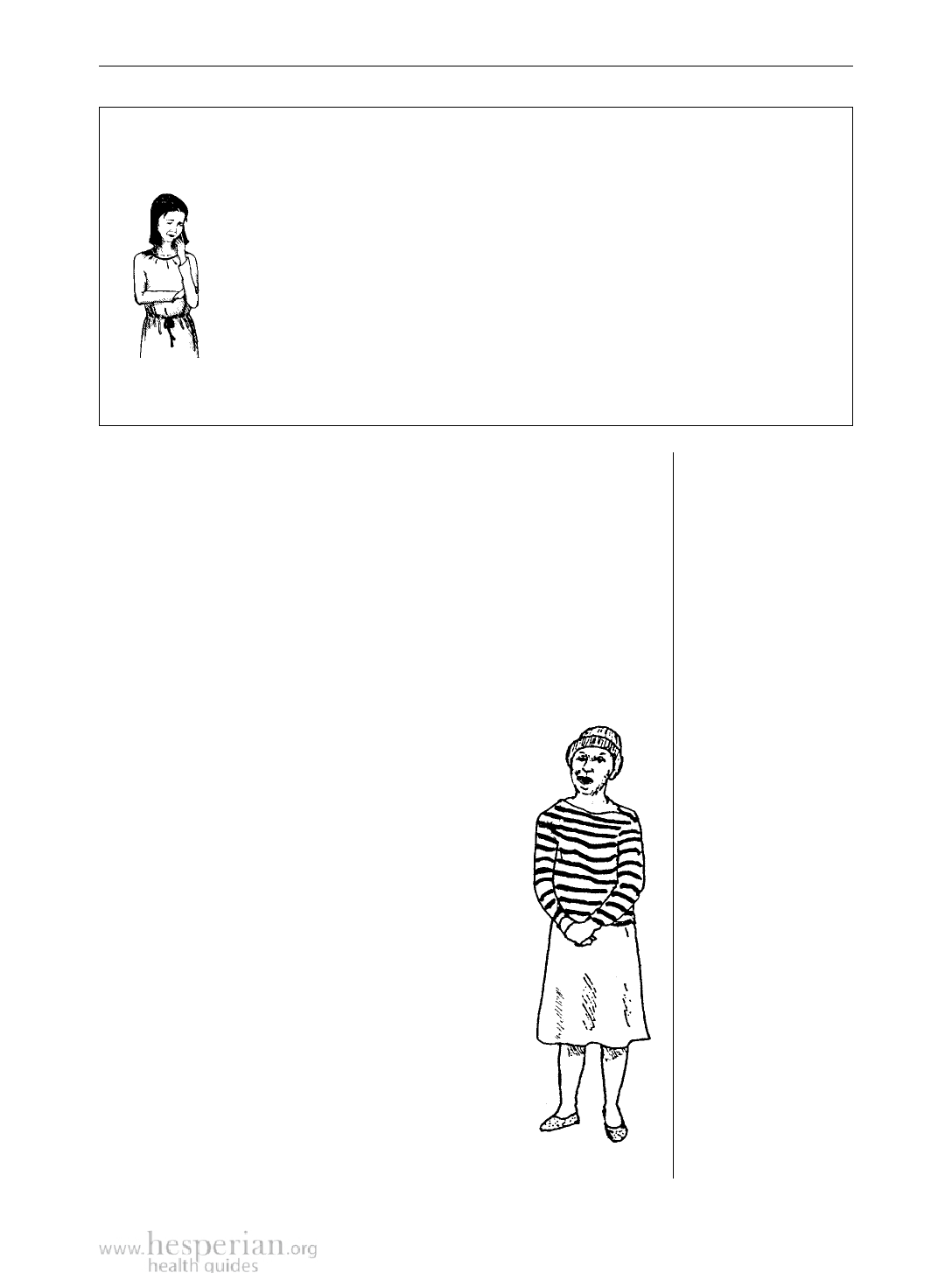
Why STIs Are a Serious Problem for Women 263
How to know if you are at risk for an STI
Even if you do not have any signs, you may be at risk (more likely to have an STI) if:
• your partner has signs of an STI. He has probably passed the STI to you,
even if you have no signs.
• you have more than one partner. The more partners you have, the
greater the chance that one of them has passed an STI to you.
• you have had a new partner in the last 3 months. He may have had
another partner just before you who had an STI.
• you think your partner might have other partners (for example, he lives
away from home).This means he is more likely to become infected with
an STI and infect you.
What to do if you have signs of an STI
or are at risk for an STI
If you have signs of an STI or think you are at risk for an STI, you
should start treatment right away. Unfortunately, tests for STIs are
not available in many places, may be expensive, and are not always
accurate.
• Treat the infection right away. If you have signs described in
this chapter, follow the treatments given.
• Do not wait until you are very ill. Treatment will protect you
from more serious problems later on and will prevent the
spread of STIs to others.
• Get tested if testing is available. You could be
infected with another STI and have no signs.
• Help your partner get treated at the same
time. If he does not get treated, he will infect
you again if you have sex.
• Practice safer sex. You may get another STI
or HIV if you do not protect yourself (see
page 189).
• Try to get tested for HIV. STIs and HIV
infection often occur together (see page 286).
• Buy and take all the medicine as
recommended. Even if your signs go away,
you will not be cured until all the medicine
has time to work.
If the signs do not go away after taking the
medicines, see a health worker. Pain or vaginal
discharge could also be caused by another
problem like cancer.
➤ The lack of low-cost,
accurate testing for STIs
is a major problem for
women. It may lead to
women taking medicines
they do not need,
cannot afford, and that
cause side effects.
Where Women Have No Doctor 2012